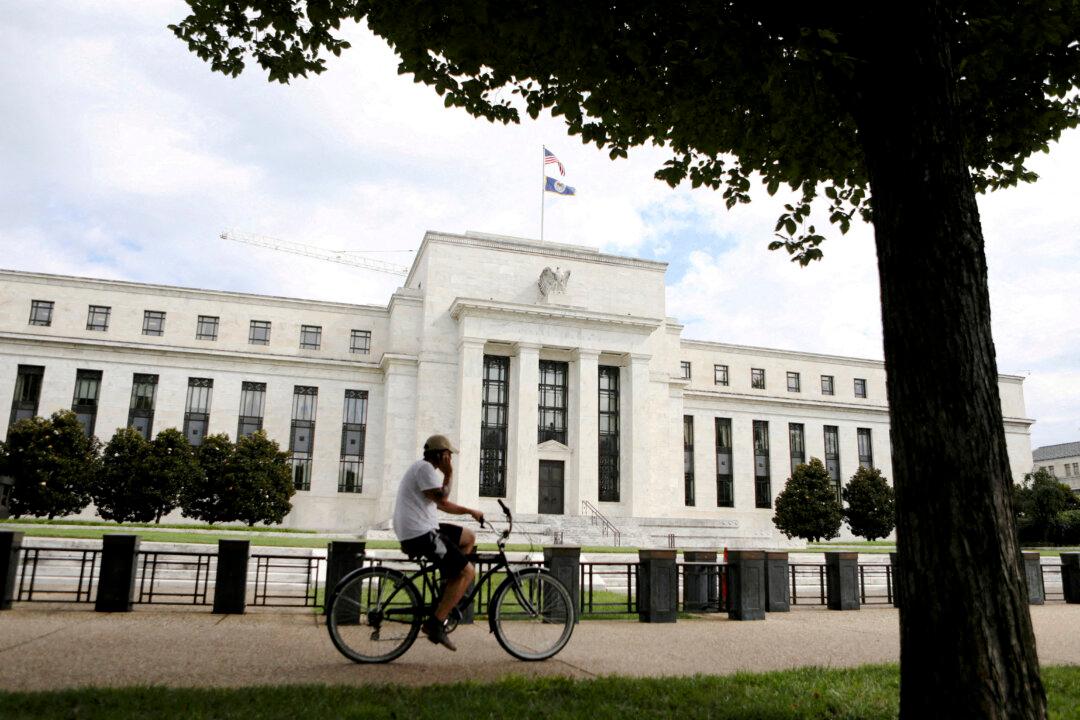The FOMC kept interest rates in their current range of 5.25–5.5 percent, with no cuts or raises, and sent the benchmark S&P 500 stock index to close at an all-time high of 5,224.
“Something quite extraordinary has happened. The prevailing belief was that the Fed would present a more hawkish view on [the] U.S.’s sticky inflation and high-interest rates,” Gary Dugan, CEO at The Global CIO Office and a foreign investor in the United States, told The Epoch Times.
“However, there was a significant misalignment between these predictions and the actual tone of yesterday’s FOMC meeting. The pre-meeting market speculation did not align with the outcomes, effectively returning us to the market’s initial position at the beginning of the month, with expectations of three interest rate cuts starting in June.”
The dot plot too has reflected an upward change in interest rate expectations since December.
The dot plot is a chart of the projections made by each Fed official concerning the central bank’s key short-term interest rate.
The plot is updated every three months to offer insights into the Fed’s future rate decisions. In the most recent projections, Fed officials indicated that they anticipated a reduction of 0.75 percentage points in 2024.
Implications
The Fed helped propel a stock boom late last year when it suggested a shift toward rate decreases after a raising cycle aimed at lowering inflation, which had hit 40-year highs. The Fed last increased interest rates in July 2023.According to analysts, the upward shift in the 2024 core inflation projections and the absence of any shift in the expected cutting path signal that the FOMC does not see moderately higher inflation as a barrier to cutting policy rates.
“We had thought that the FOMC wanted to see inflation below 2.5% as a prerequisite for cutting rates, but the projections suggest that they expect to ease monetary policy even if y/y [year on year] core inflation is running higher,” said analysts by British multinational bank Standard Chartered, in an alert note viewed by The Epoch Times.
When, Not If
Nevertheless, regarding the future trajectory of the Fed, Mr. Powell made it fairly clear that the Fed’s next move will be down.Although the economic outlook remains uncertain and the Fed is highly attentive to inflation risks, it is prepared to maintain the current target range for the federal funds rate for longer, if appropriate, Mr. Powell said.
“In other words, it seems more a question of when [there will be a rate cut] rather than if,” HSBC Global Research said in a note.
Consequently, the first cut could be expected in June, analysts predict, or even earlier.
“It is possible that by the time the FOMC meets in May, core PCE will slow to 2.6% y/y. This leaves a small possibility of a May policy rate cut. We do not expect a May cut, but there could be some positive market reaction if February and March core PCE data make 2.6% PCE y/y possible for May,” the Standard Chartered note added.
Looking ahead, the Fed’s economic projections also reflect its desire for a soft landing.
A soft landing is a cyclical slowing in economic growth that prevents a recession. A central bank seeks a soft landing when it wishes to stop an economy from overheating and suffering excessive inflation without inflicting a major slump.
“They [the Fed] slightly raised their 2024 inflation and growth forecasts while lowering the unemployment rate prediction. This demonstrates their intention to achieve economic goals without triggering a recession,” Michael Ashley Schulman, chief investment officer at the California-based Running Point Capital Advisors, told The Epoch Times.
“By aiming for ‘ample’ reserves instead of ‘abundant’ ones, they hope to maintain stability in money markets and avoid excessive volatility,” he added.
According to Mr. Schulman, the prospect of future rate cuts could prove beneficial for certain sectors. Lower interest rates—and maybe even just the hope of lower rates—would throw a lifeline to commercial real estate, regional banks, and companies struggling to refinance debt.







